 Petzl has reported a couple of instances where cracks may have developed over time in the arms of the ASAP LOCK (B71 ALU). While a cracked arm presents no additional immediate risk to the user, as with any personal protective equipment (PPE), the presence of such a crack requires immediate retirement of the device. In the unlikely event that someone finds an ASAP LOCK displaying cracks, Petzl America will replace these units under their standard product warranty.
Petzl has reported a couple of instances where cracks may have developed over time in the arms of the ASAP LOCK (B71 ALU). While a cracked arm presents no additional immediate risk to the user, as with any personal protective equipment (PPE), the presence of such a crack requires immediate retirement of the device. In the unlikely event that someone finds an ASAP LOCK displaying cracks, Petzl America will replace these units under their standard product warranty.
Inspection Required for Petzl ASAP Lock
What piece of the “rescue puzzle” is your team missing?
As we all know, the moment you enter an industrial facility, you’re instructed about who to notify in case of an emergency. And if something happens – no matter what the emergency – you can bet they’re going to call the rescue team. The question is, “When the call comes in, will your team be ready?”

Having taught rescue in industrial plants for more than 20+ years, I’ve observed how industrial rescue teams have been created and how they’ve been trained. I’ve also observed how they have responded to various types of incidents – including some rescue scenarios they could have never expected.
Over the years, I’ve also seen how the needs of rescue teams change. That’s one reason we continue to update and modify our training programs. We want the industrial teams that we train to be able to respond safely and effectively to all the various types of emergencies they may face at an industrial facility. Again, when help is needed, the onsite rescue team will be called!
Greater Demands on Industrial Responders
 Back in the day, most sites typically only offered fire brigade training for their emergency responders. Eventually, medical was added, then hazmat, and finally confined space rescue – primarily in response to OSHA 1910.146. And, with permit-required confined spaces, most often comes the need for high angle rescue abilities as well. Once a victim is removed from a confined space, there is generally the need for raising or lowering the victim to ground level for medical transport.
Back in the day, most sites typically only offered fire brigade training for their emergency responders. Eventually, medical was added, then hazmat, and finally confined space rescue – primarily in response to OSHA 1910.146. And, with permit-required confined spaces, most often comes the need for high angle rescue abilities as well. Once a victim is removed from a confined space, there is generally the need for raising or lowering the victim to ground level for medical transport.
As new regulations and standards have emerged, additional demands have been placed on industrial rescuers. This includes the new Confined Spaces in Construction Standard from OSHA (1926 Subpart AA). This new ruling provides construction workers with protections similar to those manufacturing and general industry workers have had for more than two decades. Differences tailored to the construction industry include requirements to ensure that multiple employers share vital safety information and to continuously monitor hazards – a safety option made possible by technological advances since 1910.146 was issued.
It is also becoming more difficult to justify "dialing 911" with the hope that the local fire department will be able to respond in a timely manner. Industrial sites are being forced to examine the reality of relying on local response agencies. And, in some cases, the plant’s industrial emergency response team may be the community’s best trained and equipped technical rescue capability. As one of our client’s stated after evaluating local response capabilities,
"We are truly an island unto ourselves. When it comes to certain types of emergencies, we're on our own!"
What Can Possibly Go Wrong?
We often focus on the importance of confined space and high angle rescue, but what about the other potential scenarios that industrial rescue teams may face. In recent years, we’ve seen an increase in requests from our clients in a wider variety of rescue disciplines – including Suspended Worker Rescue (Rescue from Fall Protection), Trench Rescue, Machinery Entrapment Rescue (“man in machine” is probably a better description), Water Rescue and Building Collapse for First Responders.
Let’s talk about these disciplines and how they can apply to industrial situations – keeping in mind that medical care will be required in most every situation. Many times those first on the scene have the greatest opportunity to make the difference for an injured worker. The first hour in a medical emergency is a crucial factor in increasing chances for survival.
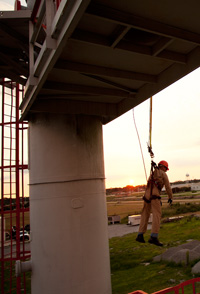 Suspended Worker Rescue (Rescue from Fall Protection)
Suspended Worker Rescue (Rescue from Fall Protection)
With expansion and construction work occurring in many facilities, you can often spot a variety of potential rescue scenarios just waiting to happen. For example, from stacks and vessels to scaffolding and towers, you will often find workers operating at varying heights
Here’s where the industrial rescue team must be ready for a timely response to Suspended Worker Rescue. Because suspension trauma can occur rapidly, time is of the essence. First of all, just reaching a suspended worker can be a challenge. Then, the victim must be raised or lowered to a safe area. Rescuers must have the appropriate equipment to keep themselves from harm’s way and be prepared to act quickly and efficiently.
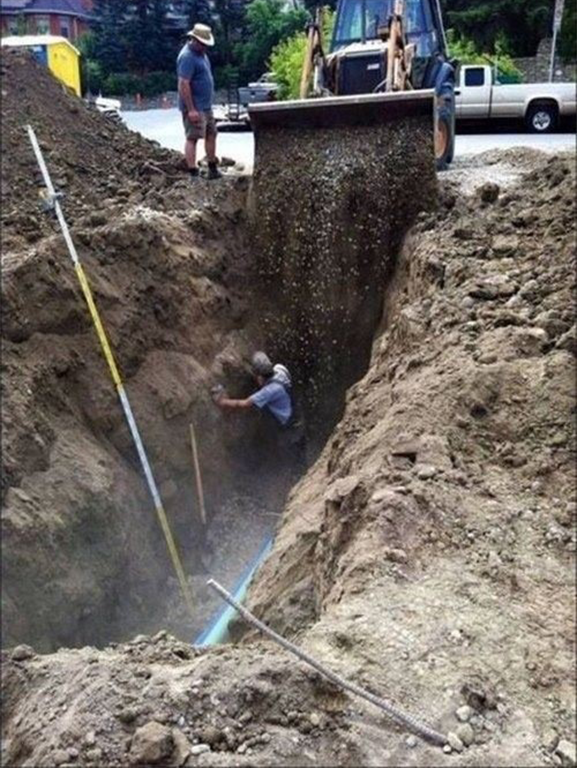 Trench Rescue
Trench Rescue
Many sites will have some type of trenching job going on this year. Is your team trained to handle that type of collapse? Do you have the equipment for emergency shoring? Or, who can you call for help?
With an unsupported or improperly shored trench, it will collapse 100% of the time. It’s only a matter of when. Also keep in mind, even a relatively small cave-in involves about 1.5 cubic yards of dirt – or about 4,000 lbs. It is imperative that rescue personnel be trained and equipped prior to tackling one of these type emergencies – they are much more dangerous than they look!
Another key concern or consideration for trench or excavation work is “who” is signing off as to the safety of the trench? In talking with many of our clients, they may send an “entry supervisor” (company representative) to evaluate and sign off on a confined space permit. These individuals may have never been taught what to look for to determine if the protective system is adequate or installed properly.
OSHA 1926.651(k)(1) states that a “Competent Person” shall inspect the shoring system. This refers to an individual who is capable of identifying existing and predictable hazards in the surroundings, or working conditions which are unsanitary, hazardous, or dangerous to employees, and who has authorization to take prompt corrective measures to eliminate them.
OSHA Reference Excerpt [1926.651(k)(1)]
Daily inspections of excavations, the adjacent areas, and protective systems shall be made by a competent person for evidence of a situation that could result in possible cave-ins, indications of failure of protective systems, hazardous atmospheres, or other hazardous conditions. An inspection shall be conducted by the competent person prior to the start of work and as needed throughout the shift. Inspections shall also be made after every rainstorm or other hazard increasing occurrence.
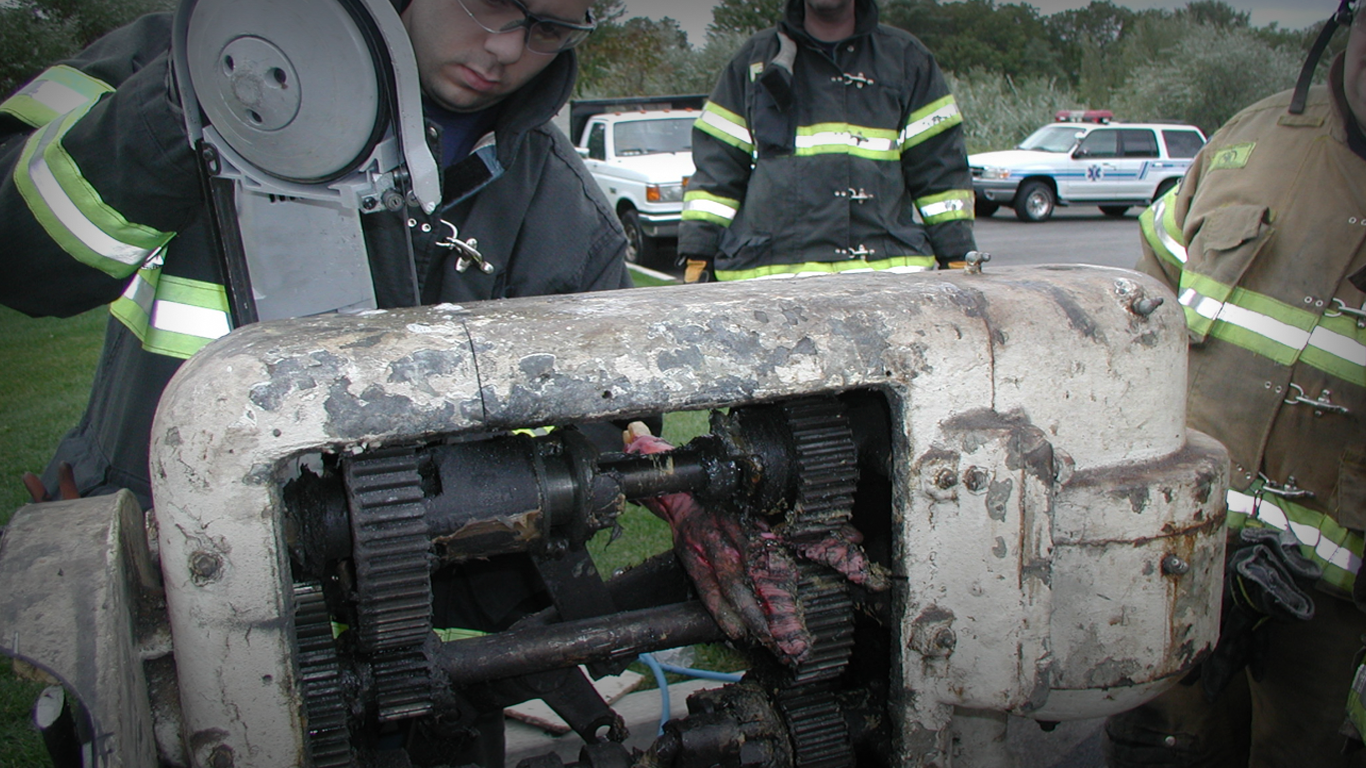 Machinery Entrapment Rescue
Machinery Entrapment Rescue
As gruesome as it sounds, another eventuality in an industrial or manufacturing facility is someone getting caught in or under machinery or heavy equipment. Is your rescue team ready for this? In these instances, the rapid use of hydraulic spreaders or pneumatic lifting bags can mean the difference in life or death for an entrapped worker.
Consider the many applications that a simple lifting bag might have for rescue or maintenance work. For example, by sliding a one-inch thick lifting bag under or between two objects, you can lift up to 70 tons, up to 20 inches off the ground, depending on bag size. A bag like this could come in pretty handy at a plant or refinery.
For these horrific incidents, you must consider how long it will take the municipal department to get to your site. Once on scene, are they familiar with the various types of equipment at your facility that may be involved? Do they understand the hazards of the working environment in an industrial facility?
Another gruesome part of machine rescue is impalement. This type of injury requires very specialized care. First of all, do not attempt to remove the impaled object! It needs to remain as is and transported with the patient to the emergency care facility. Again, the question is, who, what and where are the resources to handle this type of job?
Water Rescue
Does your facility have a dock? Do your people work over water? Do you have sediment ponds? If you answered yes to these questions, you should be asking yourself, “What will we do if someone falls in?” “Who will rescue them?” Or, are you going to depend on a coworker to jump in and try to save his buddy? Even basic “Throw, Don’t Go” training and some basic water safety equipment can make a huge difference in a person’s survivability. It could also prevent the situation from getting worse by failed heroic actions. Personal flotation devices are great, but what about when a worker gets swept under a dock or into a current? How will you handle these situations?
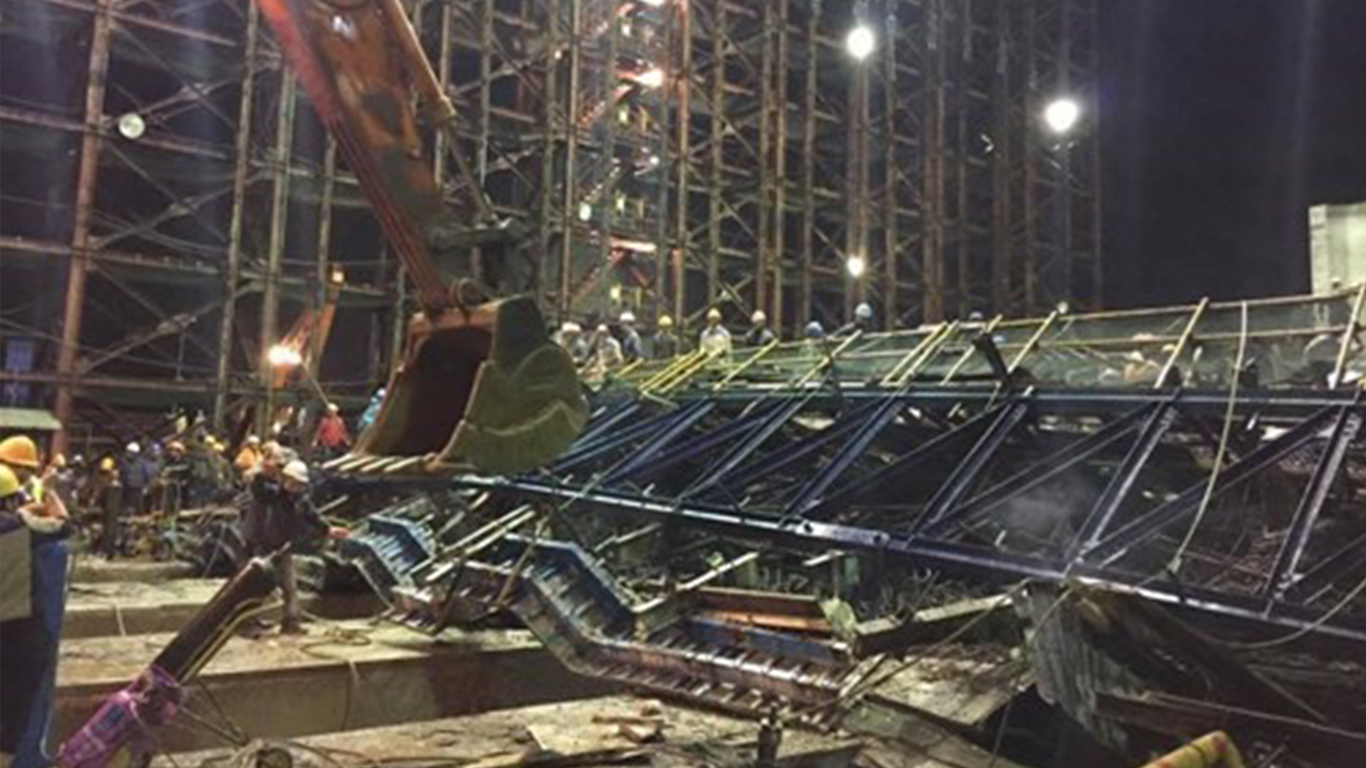 Building Collapse Rescue for First Responders
Building Collapse Rescue for First Responders
This one caught me off guard when requested by several industrial facilities, but it turns out there are some very good reasons for it. Considering weather disasters, explosions or acts of terrorism, it is a very real concern. Of course, this training for first responders isn’t the full program that is provided for FEMA or USAR teams, but it includes some very specific skill sets that can be extremely useful in industrial incidents.
Here are just a few examples. Emergency shoring techniques can be used to stabilize pipe racks or damaged structures for the rescue of injured workers. They also give industrial teams the ability to move heavy loads (5,000 to 10,000 lbs.) with simple hand tools. Remember, cranes can’t get everywhere, especially in a severely damaged area.
As emergency responders, we need to evaluate our capabilities continually and consider the types of rescue situations to which we may be called. We also need to know what outside resources are available – and, if it’s even possible for them to respond in a timely manner. Just like with confined spaces, we can’t simply dial 911 and hope they know what to do. While you hope it never happens, you’ve got to be prepared for the worst.
What is a Competent Person?
 Many OSHA standards, especially in construction, require a “competent person” to be designated at the jobsite. Filling this role requires proper training, relevant experience to the work being performed and adequate knowledge of the associated regulations.
Many OSHA standards, especially in construction, require a “competent person” to be designated at the jobsite. Filling this role requires proper training, relevant experience to the work being performed and adequate knowledge of the associated regulations.
The competent person should be able to recognize critical hazards as well as have the authority to take the action needed to mitigate hazards. It’s much more than just picking someone to fill a slot.
A previous article, "What is a Competent Person?" found in the National Safety Council's Safety+Health publication, talks about how the term is often taken too lightly. Again, it's much more than just selecting a body to fill a role or attending one 10-hour training class covering all the various standards. Competency must be considered and evaluated for this important role.
At a minimum, your designated competent person should meet the following minimum qualifications:
(1) A high level of understanding of the types of hazards typically encountered in that area of work;
(2) A solid review of applicable standards relating to that type of work; and,
(3) A thorough understanding of types of solutions to control or eliminate the hazards.
To assist in preparing your competent person in fall protection, we encourage you to register for Roco's Fall Protection Competent Person - April 4-5, 2016 course in Baton Rouge. This course will provide practical experience in recognizing fall hazards and developing appropriate measures for reducing or eliminating those hazards.
New World of Worker Safety: DOL & DOJ Reach Agreement
Source: Safety+Health Magazine February 2016
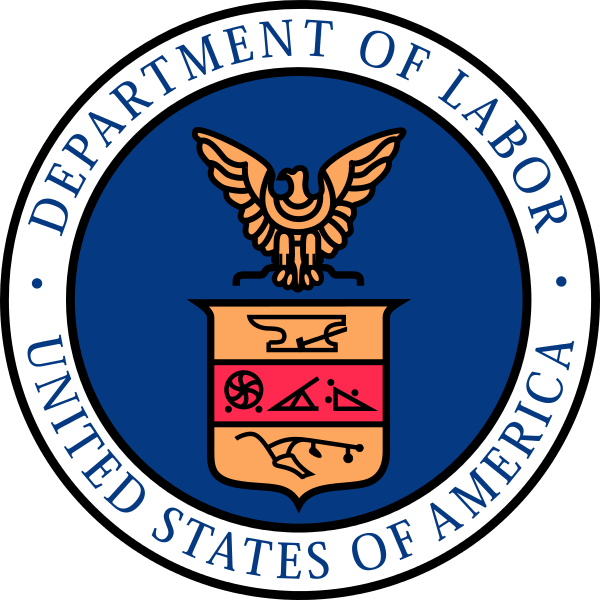 Washington – A recent agreement between the Departments of Labor and Justice will launch a “new world of worker safety” by holding managers and supervisors criminally accountable for violations of the law, agency officials announced Dec. 17.
Washington – A recent agreement between the Departments of Labor and Justice will launch a “new world of worker safety” by holding managers and supervisors criminally accountable for violations of the law, agency officials announced Dec. 17.The two departments signed a memorandum of understanding that pools their resources toward the prosecution of individuals who willfully disregard labor and environmental statutes, according to John Cruden, assistant attorney general for the DOJ’s Environment and Natural Resources Division, who spoke at a press conference moments after the memo was signed.
For the past several years, OSHA and DOJ have worked with each other on certain cases, but the new agreement formalizes that relationship.
This cooperation could lead to hefty fines and prison terms for employers and individuals convicted of violating a number of related laws. For example, a roofing contractor recently pleaded guilty to violating an OSHA law, lying to inspectors and attempting to cover up his crime; he could be sentenced up to 25 years in prison.
“Strong criminal sanctions are a powerful tool to ensure employers comply with the law and protect the lives, limbs and lungs of our nation’s workers,” OSHA administrator David Michaels told reporters at the press conference.
Deborah Harris, DOJ’s Environmental Crimes Section chief, said prosecutions would be open to “the ones making the decisions that lead to the deaths of others,” which could include people in the corporate office, as well as managers and supervisors.
Atmospheric Monitors May NOT Detect All Dangers
Readings are 20.9/0/0/0…so it must be safe for entry, right? Not necessarily!
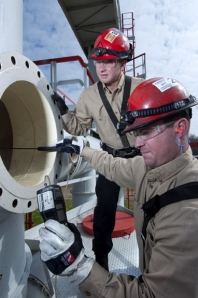
After completing an interesting confined space standby job for Roco, I wanted to caution rescuers about the possibilities of atmospheric hazards within a confined space – despite what the atmospheric monitor says!
For this particular job, the atmosphere in the workspace never varied on the 4-gas monitor readings. The readings were consistently 20.9% for O2; 0 for LEL; 0 for H2S; and 0 for CO. However, this entry required the use of air-purifying respirators even though there were no visible signs of anything unusual – no odor, no product warning signs, no indication that there may be an inhalation hazard in the space.
This particular space was located at a public water facility. It was a 70-ft. deep concrete metering pit with six consecutive 12-ft x10-ft levels. It had concrete floors and walls with a vertical ladder that accessed each level. Although the space was not designed to store any product, in this case, we still had an atmospheric hazard.
 The purpose of the entry was for remediation of mercury contamination on the concrete surface. The gross cleanup of liquid mercury had been performed years prior, but further action was required to eliminate vapor hazards still present in the lower chambers.
The purpose of the entry was for remediation of mercury contamination on the concrete surface. The gross cleanup of liquid mercury had been performed years prior, but further action was required to eliminate vapor hazards still present in the lower chambers.
During the first phases of the entry, vapor levels that exceeded 40,000 ng/m3 (nano-grams per cubic meter) were detected. The more frequently updated ACGIH Threshold Limit Value is only 25,000 ng/m3. The work environment in this space routinely approached twice this level, even though there were no visible signs of liquid mercury. The source of the toxic atmospheric hazard was invisible and odorless – mercury vaporizing from the concrete surfaces.
Mercury is only one example of a toxicant that can produce a hazardous atmosphere in confined spaces that will not be indicated on a typical 4-gas meter or atmospheric monitor. Many rescuers assume that their 4-gas meter will detect all atmospheric conditions that may present a risk to their health or safety, but this is just not true. There are a wide variety of agents or toxicants besides mercury that will not be detected and whose presence may require other controls or the use of respiratory protection. This mistake could be deadly, or leave rescuers with chronic health issues.
In this scenario, for example, if you were an off-site rescuer responding to the above described space in an emergency situation. Without someone on site to inform you of the possible hazard, you would have no indication that any hazards were present. Many times as municipal rescuers we respond to, shall we say, shady locations where unauthorized storage or illegal dumping of hazardous products has taken place; there are no SDS, placards, or signage. Personnel on scene may not know, or may not want to relay vital information about a space of any products within the space.
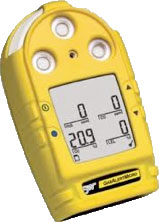
Rescuers Beware: It's important to play the role of “detective” when planning or preparing to make a confined space entry.
Oftentimes, there are placards or signs on tanks or storage containers to start the investigation into what hazards may be present – and SDS for additional information. However, as rescuers, we often fall into a state of “false security” with our 4-gas meter readings.
While much of our training may include “Go/No Go” scenarios for rescue teams, the use of respiratory protection is usually based on one of the “Big 4” readings on our atmospheric monitors. Unfortunately, this may only serve to reinforce the notion that a 4-gas monitor will always provide the “complete” information of what may be going on inside a confined space. We get dependent on these monitors to tell us if it’s safe to enter without respiratory protection – and there may be much more to the story!
OSHA’s Respiratory Standard [1910.134 (d)(1)(III)] specifies "Where the employer cannot identify or reasonably estimate the employee exposure, the employer shall consider the atmosphere to be IDLH.”
In the above statement, if you substitute Team Leader for “employer” and “Rescue Team” for employee, you may find that you cannot “identify or reasonably estimate the employee exposure.” Therefore, rescuers would need to use SCBA/SAR and other PPE until you can completely identify what hazards are in the space even though typical monitoring devices are telling us that all is well.
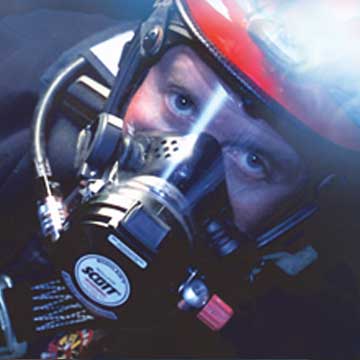
While your standard 4-gas meter is an important screening tool – it is NOT a "catch all" for every atmospheric hazard.
Remember that NIOSH statistics indicate that 40%-60% of confined space entry fatalities are (would-be) rescuers, including both dedicated on-site standby teams and off-site professional rescuers (municipalities) who attempt to perform confined space rescues.
But let’s take this a step further. If you ask most rescuers at what O2 level does an atmosphere become dangerous, they will say below 19.5%. I know from my initial hazmat/confined space training on 4-gas monitors included oxygen displacement. It was so elegantly described to me as “if your monitor shows a decrease in oxygen, it is telling you that something else has pushed out that percentage of oxygen and replaced it with some other agent.” Now, it would be up to you to figure out what else is in the air.
For example, normal breathing air is 20.9%. To get a reading of 19.5% means that about 1.4% of “something else” has displaced the oxygen. Then, depending on what that “something else” is, could require the use of respiratory protection. Hey, wait, the good news keeps coming, and I am getting in way over my head on this science stuff, but my high school chemistry teacher should still be proud. Ambient air is made up of about 79% nitrogen and other gases and 21% oxygen. So, using fingers and toes mathematics, that equals about a 4:1 ratio of nitrogen to oxygen.
In other words, if we have a 1% displacement of oxygen from the breathing air, it will be accompanied by about a 4% displacement of nitrogen (both gases displace at about the same rate). Therefore, instead of it being about a 1.4% percent of an unknown product in our breathing air, it could be as much as 5.6% or more! And, depending on what that product is, it could already be at its IDLH level.
Project Scientist Spencer Pizzani of Weston Solutions provides this insight.
"While many rescuers are habituated to only watch oxygen (O2) percent composition, this can be deceptive. The OSHA standard for O2 concentration is based on standard temperatures and pressures at sea level. When an environment presents lower pressure (such as at higher altitudes or in chambers subject to continuous air evacuation), the partial pressure of O2 is decreased as described by the Ideal Gas Law. This can lead to 'normal’ concentrations, but with less oxygen available for respiration.
A widely used example demonstrates that the partial pressure of oxygen in a confined space at high altitudes such as in mountainous areas would be the equivalent partial pressure of 14-15% oxygen at sea level. This can be low enough for the leading effects of asphyxiation to manifest – a problem exacerbated by the high oxygen demand of strenuous rescue work.
Gases that displace oxygen can have a similar effect. A typical 4-gas meter will only read oxygen concentration. This neglects the largest component of ambient air – nitrogen. The portion of air normally occupied by nitrogen is also replaced by another gas. When taken as a whole, the contaminant gasses may exceed levels and require the use of respiratory protection, with no indication from the typical 4-gas meter. Many toxic gases are odorless and colorless. Radiation can be a similar risk. While some types of radiation can be filtered or excluded with the use of respiratory protection, exposure to other types are simply a function of time, distance and shielding. Rescuers entering confined spaces may have a strict time limit for operations as established by a health physicist. In such cases, a 4-gas meter would be entirely unresponsive even in the presence of an instantly lethal radiation exposure vector.”
Pizzani advises,
“Rescuers responding to an emergency always need to look at the big picture and be part detective in identifying potential hazards that may impact both initial and rescue entry. Identification of past residues in storage containers, examination of process system SDS, and any information/knowledge provided by workers familiar with the space or process is invaluable. Warning signs such as odors, visible dust, or any variability on oxygen concentration should be met with a thorough set of instrument diagnostics and further investigation.”
Summary
A standard 4-gas meter is an important screening tool for atmospheric acceptability. However, it is "not a catch all" for every atmospheric hazard. Developing a detailed preplan; identifying possible hazards; and proper PPE should be the top priority of anyone planning a rescue entry. The use of supplied air systems (SAR/SCBA) should be considered “minimum protection” for rescuers until an atmosphere is completely characterized or in the event of an unknown agent or condition. Remember, a standard 4-gas meter may not be telling the whole story.
Special thanks to contributing author, Spencer Pizzani, who is an Industrial Hygienist and Project Scientist for Weston Solutions, Inc. Weston is a global environmental consulting firm specializing in environmental solutions, specialty construction and green development.
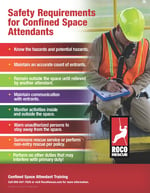
Additional Resources
- Attendant Safety Requirements Poster (pictured here)
- Confined Space Entry Checklist
- Common Causes of Confined Space Fatalities
- Confined Space Types - Are All Your Bases Covered?
RescueTalk™ (RocoRescue.com) has been created as a free resource for sharing insightful information, news, views and commentary for our students and others who are interested in technical rope rescue. Therefore, we make no representations as to accuracy, completeness, or suitability of any information and are not liable for any errors, omissions, or delays in this information or any losses, injuries, or damages arising from its display or use. All information is provided on an as-is basis. Users and readers are 100% responsible for their own actions in every situation. Information presented on this website in no way replaces proper training!

 Suspended Worker Rescue (Rescue from Fall Protection)
Suspended Worker Rescue (Rescue from Fall Protection) Trench Rescue
Trench Rescue Machinery Entrapment Rescue
Machinery Entrapment Rescue
 Building Collapse Rescue for First Responders
Building Collapse Rescue for First Responders


